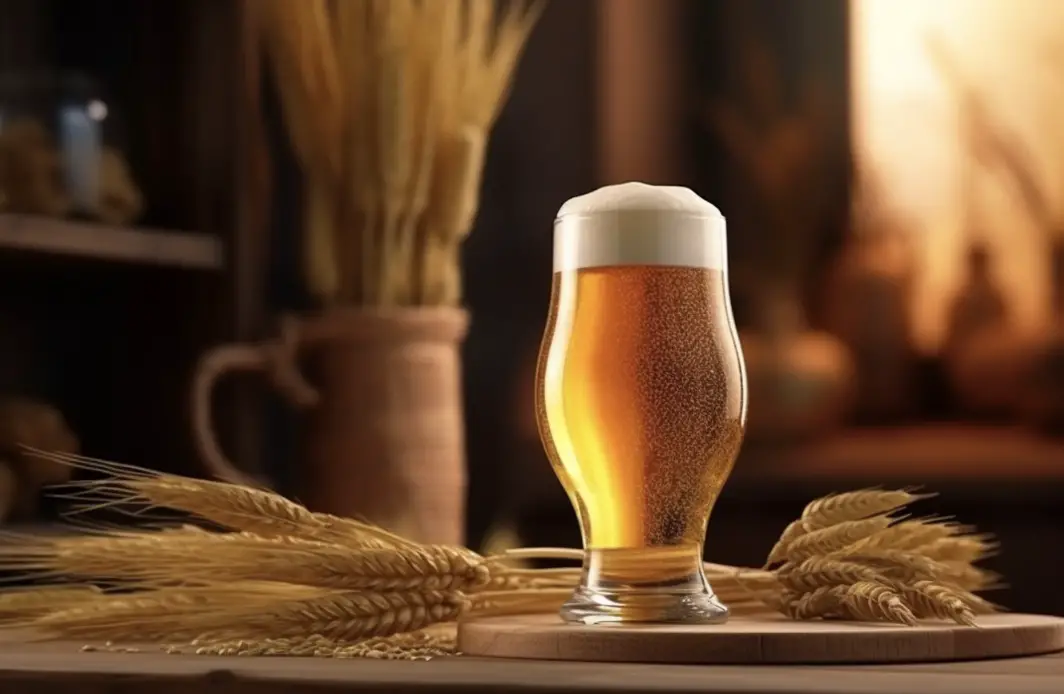As a professional brewer and microbiologist, I’ve spent years studying and savoring various wines. My passion doesn’t just stop at understanding the microscopic intricacies of fermentation; it delves deep into the sensory experiences that each wine brings.
Today, we’re journeying into the world of port wines, specifically examining the differences between Tawny and Ruby ports.
These two are frequently confused, but their distinctions, ranging from production to flavor profiles, are vast and fascinating.
If I had to give a quick answer to which port—Tawny or Ruby—is better for cocktails, I’d lean towards Tawny for its versatility and depth of flavor. But let’s not jump ahead. Let’s explore the realm of these fortified wines first.
How They Are Made
Tawny Port:
The production of Tawny Port begins similarly to any other wine. However, what makes it distinct is its aging process. It’s aged in wooden barrels, allowing it to gradually oxidize and mellow over many years. The result?
A nutty, caramelized flavor and a golden-brown color. Tawnies are often labeled with an indication of age, such as 10, 20, 30, or even 40 years. This represents the average age of the wines blended within.
Ruby Port:
Ruby Port, on the other hand, retains its bright red color and fruity vivacity because it’s aged for a shorter period, typically three years, and in larger wooden vessels to reduce the amount of oxidation. The goal? Preserve its rich, berry-like flavors.
Once bottled, it doesn’t mature any further, meaning you get to savor the youthful fruitiness of the wine.
Taste Profile

Tawny Port:
When you take a sip of Tawny, you’re met with layers of complexity. From notes of dried fruits, nuts, and caramel to hints of wood and spices, it’s a symphony of flavors.
The extended aging mellows out the alcohol, leading to a smoother, more sophisticated finish.
Ruby Port:
Ruby Port is all about boldness and vigor. Its taste explodes with fresh berry flavors, often reminiscent of cherry, blackberry, and raspberry. It’s slightly sweeter and holds a robust character, making it an instant favorite for those who have a penchant for vibrant wines.
Their Smell
Tawny Port:
Tawny’s aging process gives it a rich bouquet. The aroma dances between dried fruits, toasted nuts, and a touch of vanilla. There’s an inviting warmth to its scent, reminiscent of cozy autumn evenings.
Ruby Port:
The Ruby Port is invigorating. With its fruity aromas taking center stage, it’s often accompanied by hints of fresh grapes, cherries, and sometimes even chocolate, making it utterly enticing.
Their Main Audience

Tawny Port:
Those who have a more seasoned palate usually gravitate towards Tawny Port. It appeals to those who appreciate subtlety, complexity, and the narratives that come with aged wines.
Ruby Port:
Newcomers to the world of port or those who relish in fresh, fruity wines often find themselves loving Ruby Port. Its unapologetic boldness makes it a hit among the younger audience and those new to wine tasting.
Tawny Port vs Ruby Port for Cocktails
Port wines have a rich history of being sipped standalone, but their unique profiles also make them a fantastic addition to cocktails. Let’s dive deeper into this.

Tawny Port Cocktails:
- Tawny Old Fashioned:
- Ingredients: 2 oz Tawny Port, a sugar cube, a few dashes of Angostura bitters, orange twist for garnish.
- Method: Muddle the sugar cube and bitters with one orange twist in an Old Fashioned glass. Fill with ice cubes and add Tawny Port. Stir. Garnish with another orange twist.
- Golden Sunset:
- Ingredients: 1.5 oz Tawny Port, 1 oz bourbon, 0.5 oz lemon juice, a teaspoon of honey.
- Method: In a shaker filled with ice, combine all the ingredients. Shake well until chilled. Strain into a glass filled with ice.
- Tawny Sour:
- Ingredients: 2 oz Tawny Port, 0.75 oz lemon juice, 0.5 oz simple syrup, egg white (optional for froth).
- Method: Combine all ingredients in a shaker without ice and shake vigorously (this is called a “dry shake”). Add ice and shake again. Strain into a chilled glass.
- Porto Flip:
- Ingredients: 1.5 oz Tawny Port, 0.5 oz brandy, one whole egg, a teaspoon of sugar.
- Method: Combine all ingredients in a shaker filled with ice. Shake well and strain into a chilled glass. Nutmeg can be grated on top as a garnish.
- Autumn Orchard:
- Ingredients: 2 oz Tawny Port, 1 oz apple cider, 0.5 oz cinnamon syrup, apple slices for garnish.
- Method: Combine Port, cider, and syrup in a shaker filled with ice. Shake well and strain into a glass. Garnish with apple slices.
Ruby Port Cocktails:
- Ruby Spritzer:
- Ingredients: 2 oz Ruby Port, 1 oz club soda, lemon twist for garnish.
- Method: Fill a glass with ice. Pour in Ruby Port and top with club soda. Stir gently and garnish with a lemon twist.
- Berry Delight:
- Ingredients: 1.5 oz Ruby Port, 0.5 oz raspberry liqueur, a splash of lime juice, fresh berries for garnish.
- Method: In a shaker filled with ice, combine Ruby Port, raspberry liqueur, and lime juice. Shake well and strain into a glass filled with ice. Garnish with fresh berries.
- Ruby Fizz:
- Ingredients: 1.5 oz Ruby Port, 1 oz gin, 0.5 oz lemon juice, 0.5 oz simple syrup, soda water.
- Method: Combine the port, gin, lemon juice, and syrup in a shaker filled with ice. Shake until chilled. Strain into a tall glass filled with ice and top with soda water.
- Sunset Boulevard:
- Ingredients: 2 oz Ruby Port, 1 oz bourbon, a dash of orange bitters, orange twist for garnish.
- Method: Combine all ingredients in a mixing glass with ice. Stir well and strain into a chilled glass. Garnish with an orange twist.
- Ruby Mule:
- Ingredients: 2 oz Ruby Port, 1 oz vodka, 0.5 oz lime juice, ginger beer.
- Method: Fill a mule mug with ice. Add the port, vodka, and lime juice. Top with ginger beer and stir gently.
Whichever you choose, Tawny or Ruby, these cocktail recipes will let the unique flavors of port wine shine through. Personally, I love how Tawny Port can lend a cocktail a deep, rich depth, while Ruby Port offers vibrant and fruity notes, making every sip a delightful experience.
Conclusion and Facts
Tawny and Ruby Port, while both hailing from the port wine family, are delightfully distinct in their production, flavor, aroma, and appeal. My personal tasting experiences have seen me gravitating towards Tawny for its intricate narratives and Ruby for its audacious vigor.
Quick Facts:
- Tawny Port is aged in wooden barrels, leading to oxidation and a nutty flavor.
- Ruby Port is aged for shorter periods, retaining its fruity essence.
- Tawny has a golden-brown color, while Ruby boasts a bright red hue.
- Tawny’s taste is layered with dried fruits, nuts, and caramel.
- Ruby’s taste explodes with fresh berry flavors.
- Tawny’s aroma comprises dried fruits, nuts, and vanilla.
- Ruby’s aroma is predominantly fruity, with hints of fresh grapes.
- Tawny appeals to a seasoned palate, while Ruby is a hit among newcomers.
- Both ports are fantastic for cocktails, but Tawny offers more depth.
- Regardless of preference, both ports offer a unique tasting experience.
FAQs
1. What is the origin of Port wine?
Port wine, often simply referred to as Port, originates from the Douro Valley in northern Portugal. While many wines are referred to as “port,” genuine Port wine can only come from this specific region, much like how Champagne is region-specific to Champagne, France.
2. Why is Port wine fortified?
Port wine is fortified to preserve it during the long sea voyages from Portugal to England, which was one of its main markets. The addition of a distilled spirit, typically grape brandy, halts fermentation, leaving residual sugar in the wine and increasing its alcohol content. This not only provided preservation but also gave Port its distinctive sweet and robust characteristics.
3. How should I store my opened bottle of Port?
Once opened, Port should ideally be consumed within a few weeks to retain its freshness, especially Ruby Port due to its young nature. It’s recommended to store an opened bottle upright, in a cool, dark place with the cork tightly sealed. Tawny Ports, because of their aging process, are a bit more resilient and can last a little longer once opened.
4. Are there any food pairings that complement Port wine?
Absolutely! Port wines, with their rich and sweet profile, pair wonderfully with cheeses, especially blue cheese and aged cheddars. They also complement desserts like chocolate mousse, berry tarts, and caramel flan. Additionally, Tawny Port pairs beautifully with nut-based desserts and dried fruits.
5. How does vintage come into play with Port wines?
A Vintage Port is made from the grapes of a declared vintage year and is considered the highest quality type of Ruby Port. Not every year is declared a vintage in the Douro; only those years with exceptional harvests. These Ports are bottled after only two years in barrels and can continue to mature in the bottle for many decades. The year of the vintage will be indicated on the label, showcasing the quality and characteristics of that particular year’s harvest.





